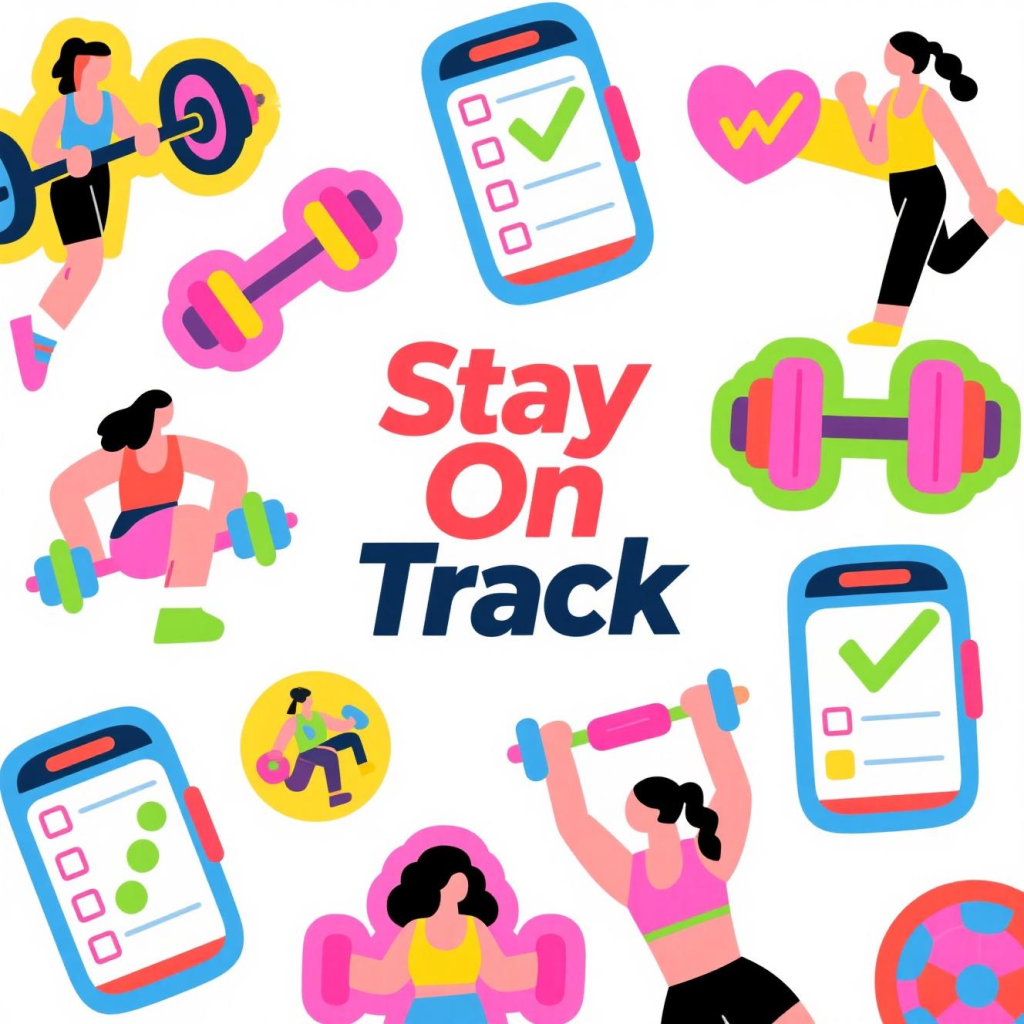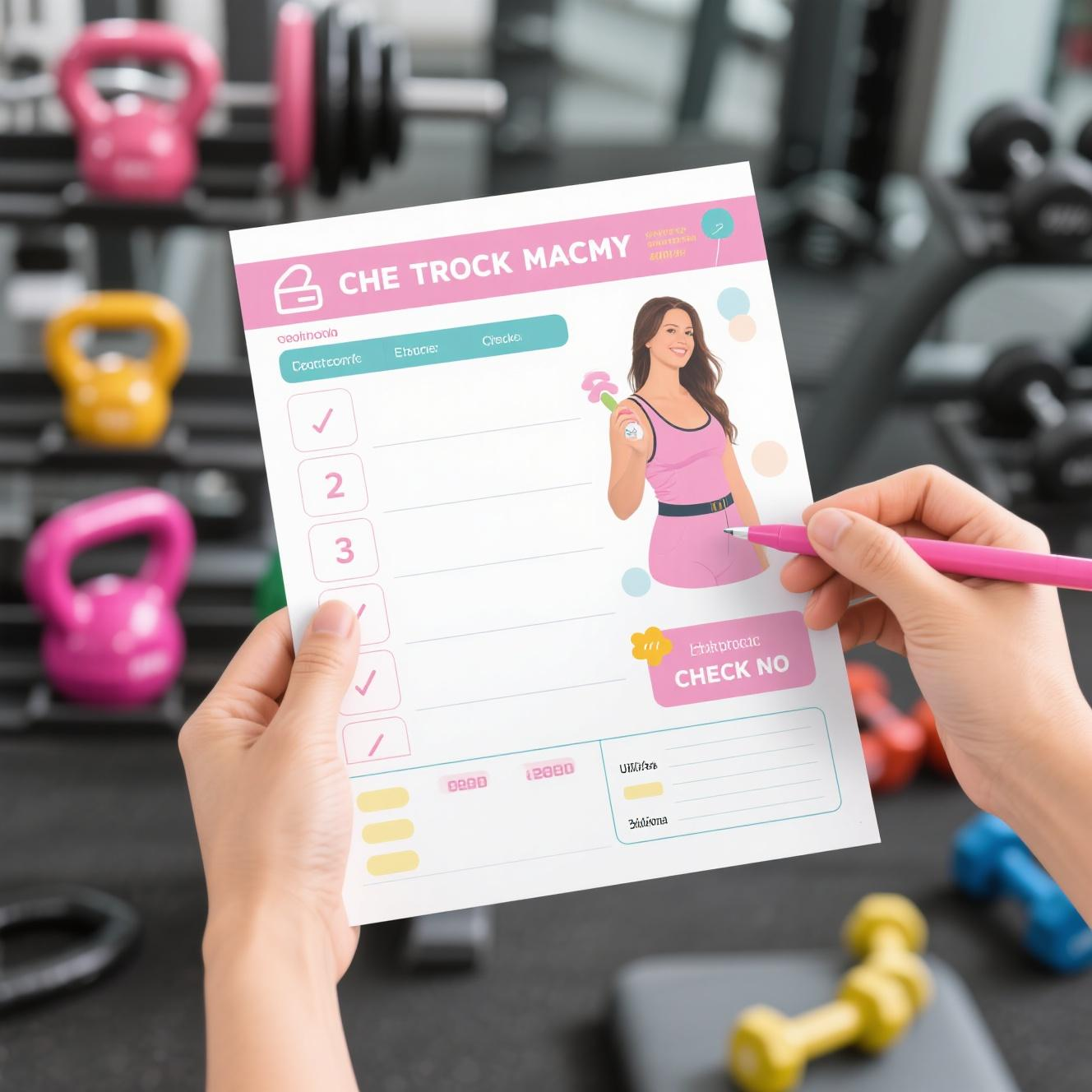When Alyssa printed her first fitness tracker template one Sunday afternoon, she didn’t know it would become the glue holding her habits together. She was navigating postpartum fitness, juggling sleepless nights, and battling energy dips. She longed for a tool that could help her stay consistent—not a weight-loss program, but a system that reflected her everyday life. What she found in those printable check-in pages was structure imbued with flexibility. Over time, the tracker became more than paper—it became a commitment she respected, week in and week out.
Printable fitness trackers offer more than just a record of workouts—they help women visualize progress, celebrate small wins, and remind us that consistency is worth applauding. Studies show tracking leads to 79 % higher success in fitness goals over time. For busy women navigating work, family, and fitness, it’s a tool of clarity.
Alyssa’s first template included daily workout logs, water intake boxes, mood check-ins, and a habit tracker for stretching. She printed it on pastel paper and hung it on the fridge. Some days she filled in a full workout: lunges, kettlebell swings, yoga. Other days she simply checked off “walked 30 minutes” or “stretched before bed.” Looking back, the simplest checkmarks buoyed her more than grand workouts—because they represented faithfulness to the process.
Tracking makes plans live. Instead of typing notes or tapping apps, printing one-week or monthly trackers makes intentions tangible. Even plain pages from Add A Little Adventure let you journal workouts and monitor hydration with colorful daily squares . Seeing your pen move through the week builds momentum.
The templates extend beyond workouts. MaplePlanners offers month-long fitness planners, fasting logs, and step trackers—tools that connect daily habits with long-term changes . Alyssa used the step tracker to fight mid-afternoon fatigue. When she reached 10 000 steps before dinner, she felt achievement that propelled her to cook healthy meals rather than cave into ordering takeout.
Food journals are equally helpful. Cassie Scroggins’s 10-page binder setup combined progress logs, habit trackers, and diet journals—she lost 70 lb after pregnancy using it . Inspired by her story, Alyssa added a weekly meal plan sheet, writing smoothies, grain bowls, and home-cooked dinners alongside her workouts. It didn’t feel rigid—it let her feel nourished and more energetic during evening workouts with her toddler.
Fitness planners don’t have to be serious. When you print colorful weekly templates from The Peculiar Green Rose, it becomes fun to fill in water glasses and calorie estimates for home workouts . The cheeriness colored Alyssa’s experience, making her feel like she was playing a game with herself. Motivation wasn’t about guilt—it was about delight.
Bullet journalers swear by combining habit trackers and progress logs, with sections for measurements, sleep, mood, and even affirmations . That holistic approach helped Alyssa notice that on weeks she slept well, her workouts felt stronger, her mood steadier. It turned the sheet into insight, not just repetition.
Printable trackers also help identify setbacks. When a few days go blank, it’s not failure—it’s data. Alyssa realized travel, family birthdays, and her cycle affected her energy. That’s why she paired her fitness tracker with gentle flow workouts during her menstrual week. Studies show tracking your cycle and adapting workouts improves performance and motivation . Seeing patterns helped her adjust workouts rather than abandon them.
Fitness journals refine over time. Alyssa switched monthly kits to quarterly planners as she got consistent. She added columns for strength milestones—deadlift PRs, plank holds, bodyweight squats. She used templates from AnjaHome to record meal planning, water intake, and progress photos . The progression turned her sheets into a story of resilience.
To stay flexible, she downloaded Excel trackers shared on Reddit—workout modules with forms, measurements, analytics. She merged paper and digital. The printable gave her the ritual of reflection; the spreadsheet gave data trends—weight, body fat, progress plateaus.
Using these templates doesn’t require fancy printers. A home inkjet and binder do just fine. Many printables include editable PDFs or Canva-ready templates—Colorful, elegant, ready for personal style . Picking sheets you love makes tracking an experience, not a chore.
Why do these trackers matter for women’s fitness success? Accountability, yes—but also insight. When you record what you did and how you felt, you learn what works. You discover that a salad and protein bowl leaves you energized, while skipping protein leads to afternoon slump. You notice workouts align with energy phases or cycle days. That kind of awareness is rare in a weight-loss app.
That insight happened for Alyssa. One week she noted poor sleep and bad workouts. The next week she prioritized rest and saw movement improvements. She felt empowered to tweak habits rather than beat herself up. It’s fitness autonomy in action.
Printable fitness trackers also move beyond the gym. They guide mental habits: gratitude logs, stress notes, mindfulness checkboxes. That emotional layer sustains motivation. A simple note—“felt proud after today’s walk”—held more weight than any calorie count.
Tracking became a ritual—Sunday evening became planning time, four pages spread across the kitchen while coffee brewed. Then midweek refill sessions, tapping off mini-wins. The visual rhythm replaced chaotic morning searches for motivation.

These printable templates support high-value searches—“workout log printable,” “habit tracker for fitness,” “meal and workout planner,” “water intake tracker,” “progress tracker template.” Yet beneath every keyword lies a woman like Alyssa: needing structure that fits life, that feels personal, that becomes a companion rather than a critic.
Bring them to life with markers, stickers, photographs. Choose layouts that let you track rounds of pushups or miles walked. Add spaces for gratitude or note how sore you feel—build a system that reflects the whole you, not just your reps. Because fitness isn’t an isolated goal—it’s a way you live with intention.
When Alyssa flipped back through six months of trackers, she didn’t just see workouts—she saw perseverance after sleepless nights, consistency during travel, evolution from baby waddles to confident lunges. Each filled-in box was a moment she chose herself. Think of your printer, paper, and pen as the start of that same journey—one you chart in your own handwriting, at your own rhythm, and with your own triumphs lighting the way.




